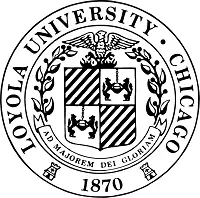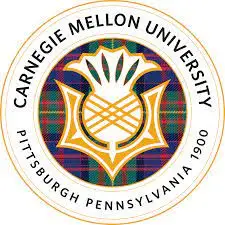Want to know more about the Best Multidisciplinary Schools In the US and make an informed decision? Here is a good place to start.
Are you tired of feeling like you’re stuck in a box? Do you yearn to explore a multitude of subjects and develop a broad range of skills?
Today, we’ll be taking a deep dive into the world of multidisciplinary schools. These institutions are like the superheroes of the academic world, offering an education that covers everything from humanities to STEM fields.
Get ready to embark on a thrilling journey of discovery with me as we explore top-notch multidisciplinary schools.
Please note that schools are selected based on our criteria (at the end of the article), ranked by the latest acceptance rate.
Table of Contents
#25. University of Arizona


- Acceptance rate: 87%
- Average entry score: 1110-1360 SAT or 21-29 ACT
- Student-to-faculty ratio: 15 to 1
- Estimated cost of attendance (tuition and fees): $30,084-$52,367
- Average earning potential for graduates: $32,382 (College Factual)
The University of Arizona’s Interdisciplinary Studies program offers students a chance to piece together the elements of several academic disciplines into their own unique degrees.
With academic advisors as trusty guides, students can navigate the choppy waters of designing their own course of study. The program offers a treasure trove of resources, from research opportunities to top-notch facilities and technology.
What makes this program truly special is its emphasis on collaboration between students and faculty from different disciplines, creating a veritable melting pot of intellectual stimulation.
Source: Interdisciplinary Studies
#24. Arizona State University


- Acceptance rate: 88%
- Average entry score: 1120-1180 SAT or 22-24 ACT
- Student-to-faculty ratio: 18 to 1
- Estimated cost of attendance (tuition and fees): $32,207
- Average earning potential for graduates: $40,220 (Grad Reports)
At Arizona State University (ASU), the interdisciplinary studies program is a gateway to a multifaceted and all-encompassing education. This academic approach empowers students to expand their horizons and appreciates the interconnectedness of various fields of study.
By delving into diverse disciplines, students are able to hone their critical thinking faculties and develop innovative problem-solving prowess as they learn to scrutinize complex conundrums from a wide range of perspectives.
The interdisciplinary education at ASU is a testament to the rapidly evolving needs of the job market, where professionals are expected to possess a versatile skillset and the ability to collaborate across varied domains.
Source: ASU Degree Search
#23. University of Iowa


- Acceptance rate: 86%
- Average entry score: 1130-1350 SAT or 22-29 ACT
- Student-to-faculty ratio: 16 to 1
- Estimated cost of attendance (tuition and fees): $21,829-$43,792
- Average earning potential for graduates: $36,400 (College Simply)
The University of Iowa’s interdisciplinary studies program provides students with a unique opportunity to explore multiple fields of study and gain a diverse range of knowledge and skills.
Through this program, students develop written and oral communication abilities that are essential in today’s rapidly changing job market.
They learn to approach complex issues from multiple perspectives, integrating knowledge from various disciplines to develop innovative solutions.
In addition, interdisciplinary studies students have the flexibility to tailor their curriculum to their specific interests and career goals, allowing them to create a truly personalized education.
Source: Division of Interdisciplinary Programs
#22. Loyola University Chicago


- Acceptance rate: 77%
- Average entry score: 1130-1320 SAT or 27-32 ACT
- Student-to-faculty ratio: 14 to 1
- Estimated cost of attendance (tuition and fees): $68,600
- Average earning potential for graduates: $45,000 (College Factual)
Loyola University Chicago is known for its interdisciplinary degree programs that allow students to explore a variety of subjects and connect the dots between them.
The university offers over 80 undergraduate interdisciplinary studies majors and minors, such as Environmental Science, Digital Media and Storytelling, and Global and International Studies.
This approach to education prepares students for real-world challenges by fostering critical thinking, problem-solving, and collaboration skills.
Loyola’s commitment to social justice and service-learning also sets it apart, providing students with opportunities to engage with local and global communities, making it one of the best options for students seeking a well-rounded education.
Source: Interdisciplinary Degree Programs
Similar articles like this:
- 25 Best Schools For Neuroscience In The US
- 25 Best Pharmaceutical Sciences Schools In The US
- 25 Best Astronomy Schools In The US
#21. Temple University


- Acceptance rate: 72%
- Average entry score: 1110-1340 SAT or 24-31 ACT
- Student-to-faculty ratio: 13 to 1
- Estimated cost of attendance (tuition and fees): $36,389-$50,899
- Average earning potential for graduates: $42,000 (College Factual)
Temple University’s interdisciplinary studies program allows students to create a personalized education that spans multiple subjects and disciplines.
The program encourages students to think creatively and critically while also providing them with the skills and knowledge needed to succeed in a rapidly changing job market.
Students can choose from a variety of interdisciplinary majors, including Global Studies, Environmental Studies, and American Studies, among others.
By combining courses from different fields, students are able to gain a more comprehensive understanding of complex issues while also developing the flexibility and adaptability needed to thrive in a complex and diverse world.
Source: Interdisciplinary Programs
#20. Baylor University


- Acceptance rate: 57%
- Average entry score: 1200-1380 SAT or 26-32 ACT
- Student-to-faculty ratio: 15 to 1
- Estimated cost of attendance (tuition and fees): $68,126
- Average earning potential for graduates: $38,671 (College Factual)
Baylor University’s interdisciplinary studies programs are the academic equivalent of a choose-your-own-adventure book. Students get to design their own interdisciplinary studies major by cherry-picking courses from various departments, creating a program of study that’s as unique as a snowflake.
This interdisciplinary approach isn’t just about thinking outside the box, it’s about thinking outside the entire building! Students learn to connect the dots between different disciplines, resulting in a well-rounded education that’s as satisfying as a perfectly brewed cup of coffee.
With an emphasis on experiential learning, Baylor’s program is the ultimate playground for curious minds.
Source: Baylor University Office of Interdisciplinary Programs
#19. University of Washington Seattle


- Acceptance rate: 54%
- Average entry score: 1220-1470 SAT or 29-34 ACT
- Student-to-faculty ratio: 9 to 1
- Estimated cost of attendance (tuition and fees): $30,640-$58,470
- Average earning potential for graduates: $28,600 (College Simply)
The University of Washington Seattle’s interdisciplinary studies program is unique in its focus on providing students with a highly customizable educational experience.
Students in this program have the freedom to design their own curriculum, drawing from a wide range of disciplines such as sociology, psychology, anthropology, liberal arts, and more. This allows them to create a personalized academic path that aligns with their interests and career goals.
With access to world-class faculty, cutting-edge research facilities, and a vibrant campus community, the interdisciplinary studies program at UW Seattle offers a truly unique and enriching educational experience.
Source: Interdisciplinary Arts and Sciences
#18. Howard University


- Acceptance rate: 35%
- Average entry score: 1130-1280 SAT or 20-26 ACT
- Student-to-faculty ratio: 12 to 1
- Estimated cost of attendance (tuition and fees): $52,524
- Average earning potential for graduates: $40,000 (College Factual)
Howard University’s interdisciplinary studies program is the ultimate academic power couple, combining multiple fields of study to create a well-rounded education.
Students don’t just learn to think outside the box, they’re encouraged to burn it down and build something better.
With a focus on critical thinking, effective communication, and research skills, this program creates a new breed of intellectual superheroes.
Whether you want to save the world or just get a job, Howard University’s interdisciplinary studies program equips you with the skills to make it happen.
Source: Department of Interdisciplinary Studies
What’s it like to study at Howard University?
Similar articles like this:
- 25 Best Physics Schools In The US
- 25 Best Psychology Schools In The US
- 25 Best Sociology Schools In The US
#17. University of California Santa Barbara


- Acceptance rate: 29%
- Average entry score: 26-31 ACT
- Student-to-faculty ratio: 17 to 1
- Estimated cost of attendance (tuition and fees): $37,415-$67,169
- Average earning potential for graduates: $35,213 (College Factual)
The University of California Santa Barbara is a place where interdisciplinary programs flourish. These unique programs are designed to develop skills that are necessary for success in a variety of industries.
By combining humanities, social sciences, and natural sciences, these programs provide students with a well-rounded education that prepares them for the complexities of the real world.
At UCSB, students learn how to think critically, solve problems, and analyze situations from multiple perspectives. They also learn how to communicate effectively, work collaboratively, and tackle complex issues head-on.
Graduates of these interdisciplinary programs are equipped with the skills and knowledge needed to excel in a wide range of fields, from cutting-edge technology to the latest in healthcare.
Source: UC Santa Barbara General Catalog
#16. University of Michigan Ann Arbor


- Acceptance rate: 20.2%
- Average entry score: 1360-1530 SAT or 31-34 ACT
- Student-to-faculty ratio: 15 to 1
- Estimated cost of attendance (tuition and fees): $32,272-$69,326
- Average earning potential for graduates: $42,200 (College Simply)
The University of Michigan Ann Arbor is committed to fostering interdisciplinary studies by providing ample resources and opportunities for students and faculty.
These programs are designed to provide students with a comprehensive and well-rounded education that prepares them for the challenges of the real world.
In addition, the university facilitates interdisciplinary research by creating collaborative spaces and funding opportunities for faculty members.
The University of Michigan Ann Arbor also encourages interdisciplinary thinking by hosting speakers, events, and workshops that bring together experts from different fields to share their knowledge and perspectives.
Source: College of LSA
#15. University of North Carolina Chapel Hill


- Acceptance rate: 20%
- Average entry score: 1310-1500 SAT or 29-33 ACT
- Student-to-faculty ratio: 13 to 1
- Estimated cost of attendance (tuition and fees): $24,546-$51,725
- Average earning potential for graduates: $51,500 (U.S. News & World Report)
The Interdisciplinary Studies program at the University of North Carolina Chapel Hill allows students to design a major that reflects their unique interests and career goals.
Students take courses from various departments and create a cohesive academic plan with the guidance of an academic advisor.
This interdisciplinary approach prepares students for a variety of career paths, including those in business, healthcare, law, education, and public service. Graduates of the program have found success in fields such as marketing, non-profit management, public policy, and social work.
The program’s emphasis on critical thinking, communication, and problem-solving skills makes it an excellent choice for students seeking a flexible and customizable education that leads to diverse career opportunities.
Source: UNC Catalog
#14. Boston University


- Acceptance rate: 19%
- Average entry score: 1360-1520 SAT or 31-35 ACT
- Student-to-faculty ratio: 10 to 1
- Estimated cost of attendance (tuition and fees): $79,606
- Average earning potential for graduates: $52,600 (College Simply)
Boston University’s interdisciplinary studies program offers students the opportunity to explore multiple academic fields and develop a deeper understanding of complex issues by approaching them from different perspectives.
This program encourages students to think creatively, develop analytical and critical thinking skills, and become well-rounded individuals.
When you study interdisciplinary subjects, you gain the ability to adapt to new situations, approach problems from different angles, and communicate with people of diverse backgrounds.
Graduates of this program are well-positioned to succeed in a wide range of careers, including those that require a broad understanding of complex issues and an ability to work collaboratively with others.
Source: Boston University
What’s it like to study at Boston University?
Similar articles like this:
- 25 Best Political Science In The US
- 25 Best Social Sciences Schools In The US
- 25 Best Veterinary Schools In The US
#13. University of California Berkeley


- Acceptance rate: 14%
- Average entry score: 1415 SAT
- Student-to-faculty ratio: 17 to 1
- Estimated cost of attendance (tuition and fees): $41,878-$71,632
- Average earning potential for graduates: $37,711 (College Factual)
UC Berkeley is a renowned institution for interdisciplinary studies, which encourages research collaborations across different fields.
Their research focuses on addressing complex societal challenges, such as climate change, social inequality, and healthcare.
The program’s interdisciplinary approach allows for the integration of various perspectives and methodologies, resulting in innovative solutions to real-world problems.
UC Berkeley also emphasizes the importance of undergraduate research, providing opportunities for students to engage in cutting-edge research projects with faculty members.
Source: Berkeley Academic Guide
What’s it like to study at UC Berkeley?
#12. Carnegie Mellon University


- Acceptance rate: 14%
- Average entry score: 1480-1560 SAT or 33-35 ACT
- Student-to-faculty ratio: 6 to 1
- Estimated cost of attendance (tuition and fees): $77,474
- Average earning potential for graduates: $84,000 (College Factual)
Carnegie Mellon University’s interdisciplinary programs are aimed at providing students with a holistic approach to education.
With a focus on research, these programs bring together experts from different fields to address complex societal issues. Faculty members are carefully selected for their expertise and ability to contribute to interdisciplinary projects.
They bring a wealth of experience and knowledge to the table and are dedicated to providing students with a comprehensive and rigorous education that prepares them for success in the workforce.
Source: Interdisciplinary Programs
What’s it like to study at Carnegie Mellon University?
#11. University of Southern California


- Acceptance rate: 13%
- Average entry score: 1320-1520 SAT or 30-34 ACT
- Student-to-faculty ratio: 9 to 1
- Estimated cost of attendance (tuition and fees): $60,446
- Average earning potential for graduates: $32,400 (College Simply)
The University of Southern California (USC) is a hub for interdisciplinary studies due to its vast array of academic programs. USC also boasts several research centers and institutes that bring together experts from various fields to tackle complex issues.
The university’s commitment to interdisciplinary studies is further demonstrated through its numerous dual degree programs and interdisciplinary minors. These offer students the chance to tailor their education to their unique interests and career goals.
Source: University of Southern California
#10. Washington University In St. Louis


- Acceptance rate: 13%
- Average entry score: 1490-1570 SAT or 33-35 ACT
- Student-to-faculty ratio: 7 to 1
- Estimated cost of attendance (tuition and fees): $79,060
- Average earning potential for graduates: $36,903 (College Factual)
Washington University in St. Louis offers exceptional interdisciplinary programs that combine the best of multiple fields to create a whole greater than the sum of its parts. Their quality is impressive and can make even the most skeptical person gasp in awe.
WashU’s interdisciplinary programs are like a magician pulling a rabbit out of a hat, except the rabbit is a groundbreaking research project that could change the world.
If you’re looking for a top-notch interdisciplinary education, Washington University In St. Louis is definitely the school for you.
Source: Interdisciplinary Programs
Similar articles like this:
- 25 Best Information Technology Schools In The US
- 25 Best Zoology Schools In The US
- 25 Best Journalism Schools In The US
#9. Georgetown University


- Acceptance rate: 12%
- Average entry score: 1380-1550 SAT or 31-35 ACT
- Student-to-faculty ratio: 11 to 1
- Estimated cost of attendance (tuition and fees): $78,754
- Average earning potential for graduates: $50,912 (College Factual)
Georgetown University understands the value of interdisciplinary studies and offers numerous resources to support students pursuing this academic path.
The University’s Interdisciplinary Studies Program allows students to design their own major, drawing upon courses from various departments and disciplines.
In addition, the University has several research centers and institutes that focus on interdisciplinary topics, providing opportunities for students to engage in cutting-edge research.
Georgetown’s commitment to interdisciplinary studies ensures that students are equipped with the skills and knowledge necessary to tackle complex, real-world challenges.
Source: Georgetown College of Arts & Sciences
#8. Rice University


- Acceptance rate: 10%
- Average entry score: 1490-1570 SAT or 34-35 ACT
- Student-to-faculty ratio: 6 to 1
- Estimated cost of attendance (tuition and fees): $74,110
- Average earning potential for graduates: $42,585 (College Factual)
Rice University is committed to fostering interdisciplinary studies by encouraging students to explore a wide range of fields and disciplines.
The university offers a variety of interdisciplinary programs that combines engineering, business, and leadership skills. Students can also take advantage of experienced faculty members and research facilities to enhance their education.
With a commitment to both excellence and accessibility, Rice University provides students with the skills they need to thrive in today’s global economy.
Source: School of Social Sciences
#7. Vanderbilt University


- Acceptance rate: 7%
- Average entry score: 1480-1570 SAT or 34-35 ACT
- Student-to-faculty ratio: 8 to 1
- Estimated cost of attendance (tuition and fees): $79,558
- Average earning potential for graduates: $12,000 (Grad Reports)
Vanderbilt University’s Interdisciplinary Studies program is a customizable curriculum that will prepare students for the future by helping them develop their own unique perspectives.
This program allows students to design their own course of study by combining courses from multiple departments and disciplines with the guidance of faculty advisors.
The program emphasizes critical thinking, problem-solving, and creativity. It also encourages students to explore multiple perspectives and approaches to complex issues.
With a focus on personalized learning, the program allows students to pursue their passions and develop skills that will prepare them for success in their chosen careers.
Source: Vanderbilt University
What’s it like to study at Vanderbilt University?
#6. University of Pennsylvania


- Acceptance rate: 6%
- Average entry score: 1460-1570 SAT or 33-35 ACT
- Student-to-faculty ratio: 7 to 1
- Estimated cost of attendance (tuition and fees): $65,790
- Average earning potential for graduates: $26,291 (College Factual)
The University of Pennsylvania’s interdisciplinary studies program is the perfect academic playground for those who crave intellectual adventure.
With an emphasis on collaboration and critical thinking, students get to flex their cognitive muscles while mingling with peers from different academic backgrounds.
This multidisciplinary approach offers a panoramic view of the world, allowing students to connect the dots between seemingly unrelated fields. Hands-on learning experiences, such as internships and research projects, keep things interesting and help students apply their knowledge in the real world.
In short, the interdisciplinary studies program at the University of Pennsylvania is a hub of academic excitement for those who want to learn with a twist!
Source: Interdisciplinary Studies Catalog
Similar articles like this:
- 25 Best Schools For Soil Sciences In The US
- 25 Best Art History Schools In The US
- 25 Best Schools For Aerospace Engineering In The US
#5. Duke University


- Acceptance rate: 6%
- Average entry score: 1480-1570 SAT or 33-35 ACT
- Student-to-faculty ratio: 8 to 1
- Estimated cost of attendance (tuition and fees): $84,517
- Average earning potential for graduates: $46,818 (College Factual)
Duke University offers a wide range of interdisciplinary studies programs that provide students with a unique and comprehensive educational experience.
These programs allow students to explore various fields of study and gain a deeper understanding of how different disciplines intersect and influence each other.
By taking classes from different departments, students are encouraged to think critically and creatively, as well as to develop a broader perspective on the world. In addition, interdisciplinary studies programs combine fields of study to create a more personalized and collaborative learning experience.
Source: Duke Interdisciplinary Studies
What’s it like to study at Duke University?
#4. Yale University


- Acceptance rate: 5.3%
- Average entry score: 33-35 ACT
- Student-to-faculty ratio: 6 to 1
- Estimated cost of attendance (tuition and fees): $84,525
- Average earning potential for graduates: $57,320 (Grad Reports)
Yale University’s interdisciplinary programs bring together faculty and students from diverse fields to tackle complex societal challenges.
This community fosters collaboration, innovation, and creativity, providing a platform for different perspectives to be shared and explored. The quality of these programs is unparalleled, with renowned experts leading the way and cutting-edge research at the forefront.
Faculty from various disciplines work together to push the boundaries of knowledge and make a real-world impact. This approach creates a dynamic learning environment that prepares graduates to be leaders in their fields and tackle the world’s most pressing issues.
Source: Interdisciplinary Research and Special Programs
#3. Stanford University


- Acceptance rate: 4%
- Average entry score: 1470-1570 SAT or 34-35 ACT
- Student-to-faculty ratio: 5 to 1
- Estimated cost of attendance (tuition and fees): $78,898
- Average earning potential for graduates: $40,010 (College Factual)
Stanford University is renowned for its interdisciplinary studies, which allow students to explore multiple fields of study and develop a well-rounded education.
One of the standout features of these programs is the small class sizes, which promote individualized attention and foster a tight-knit community of learners.
With a student-to-faculty ratio of just 5:1, students have ample opportunity for one-on-one interactions with professors and can participate in lively class discussions.
This personalized approach to learning is a hallmark of the Stanford experience. It helps students develop into well-rounded individuals who are prepared for the challenges of professional life.
Source: Interdisciplinary Programs
What’s it like to study at Stanford University?
#2. Massachusetts Institute of Technology


- Acceptance rate: 4%
- Average entry score: 1570 SAT or 36 ACT
- Student-to-faculty ratio: 3 to 1
- Estimated cost of attendance (tuition and fees): $77,570
- Average earning potential for graduates: $35,000 (ZipRecruiter)
MIT’s interdisciplinary studies provide students with a unique opportunity to explore multiple fields of study and gain a well-rounded education. After taking courses in different departments, students are more likely to approach problems from a variety of perspectives.
This fosters creativity, innovation, and critical thinking skills that are essential for success in today’s rapidly evolving world. Students are also exposed to a wider range of ideas and can develop a deeper understanding of the interconnectedness of different disciplines.
This interdisciplinary approach prepares students for careers in fields that require a multidisciplinary skillset and fosters a lifelong love of learning.
Source: MIT Interdisciplinary Programs
#1. Columbia University


- Acceptance rate: 4%
- Average entry score: 1440-1570 SAT or 34-35 ACT
- Student-to-faculty ratio: 6 to 1
- Estimated cost of attendance (tuition and fees): $85,000
- Average earning potential for graduates: $42,682 (College Factual)
Columbia University’s interdisciplinary education approach incorporates elements from all fields, helping students to better understand how different subjects and perspectives are connected.
This approach enables students to integrate ideas from various disciplines and apply them to real-world problems. The benefits of interdisciplinary education include the development of critical thinking skills, creativity, and problem-solving abilities.
Students are also exposed to diverse perspectives, cultures, and ideas, promoting a more inclusive and tolerant society.
With access to resources across multiple departments and faculties, students can tailor their education to their individual interests and career goals, preparing them for success in an ever-changing and interconnected world.
Source: Interdisciplinary Studies in Education
What’s it like to study at Columbia University?
Conclusion
The above institutions represent some of the most distinguished multidisciplinary schools available.
By enrolling in one of these programs, you’ll have the unique opportunity to broaden your knowledge in a wide range of subjects while developing the skills necessary to synthesize and connect disparate fields.
Indeed, these schools offer a pathway to becoming a true polymath, an individual with a comprehensive and varied skill set. We encourage those seeking a multidisciplinary education to consider these institutions.
Selection Criteria
Here is a list of the factors we considered when selecting the best multidisciplinary schools:
Please note that the order in this list might vary by ranking criteria and sources.
- Reputation and ranking of the school: We looked for schools that have a strong reputation and high ranking in multidisciplinary studies.
- Faculty expertise, qualifications, and specialization: We researched the faculty members and their areas of expertise and qualifications to ensure that the school has professors with relevant expertise and specialization in multidisciplinary studies.
- Curriculum and resources: We evaluated the curriculum to ensure it aligns with students’ interests and career goals and considered the quality of the school’s facilities and resources, such as labs, equipment, and libraries.
- Opportunities for hands-on learning and research: We looked for schools that provide opportunities for hands-on experience through internships, co-op programs, or fieldwork.
- Student support services and alumni network: We considered the availability of support services and the strength of the alumni network in providing mentorship, internships, and job opportunities after graduation.
- Extracurricular activities and diversity: We evaluated the availability of extracurricular activities and clubs that align with students’ interests and considered the school’s diversity and inclusivity.
- Networking and post-graduation support: We researched the school’s network of alumni and their post-graduation support for multi/Interdisciplinary students and also considered if the schools have a strong network of industry professionals and researchers.
Frequently Asked Questions
Q1. What is a multidisciplinary program?
A multidisciplinary program is a course of study that combines multiple academic disciplines. It allows students to explore diverse subject areas and learn how they are connected.
This type of program can provide more comprehensive education and often leads to innovative thinking and problem-solving.
Q2. What are the top multidisciplinary schools?
Some of the top multidisciplinary schools in the world include:
- Massachusetts Institute of Technology (MIT)
- Stanford University
- Harvard University
- University of California, Berkeley
Q3. What types of majors or programs are offered at the best schools for multidisciplinary studies?
The top schools for multidisciplinary studies offer a wide range of majors and programs that span multiple academic disciplines. These can include:
- Environmental Studies
- Global Studies
- Cognitive Science
- Data Science
- Science, Technology, and Society
- Bioengineering
- Public Policy
- Entrepreneurship
- Sustainability
- International Development
Q4. How do I choose the right multidisciplinary school for me?
Choosing the right multidisciplinary school depends on a variety of factors, including your academic interests, career goals, and personal preferences. Other factors to consider when selecting a school include:
- Availability of majors and programs that align with your interests
- Quality of faculty and research opportunities
- Location and campus culture
- Student-to-faculty ratio and class sizes
- Affordability and financial aid options
Q5. What kind of career opportunities are available to graduates of multidisciplinary schools?
Graduates of multidisciplinary programs are well-equipped for a variety of career paths, as they have a diverse skill set and a broad understanding of multiple areas.
Some potential career opportunities for graduates of multidisciplinary schools include:
Environmental policy and planning
- Healthcare management and administration
- Renewable energy development
- Biotechnology and pharmaceuticals
- Education and teaching
- Government and public service
- Entrepreneurship and innovation
- Data analysis and technology consulting.
References
[1] Official Websites
[2] Salary Data from Glassdoor, College Factual, Grad Reports, College Simply, and Zippia, among others
[3] Ranking references including news media such as Colleges Offering an Interdisciplinary Studies Major


